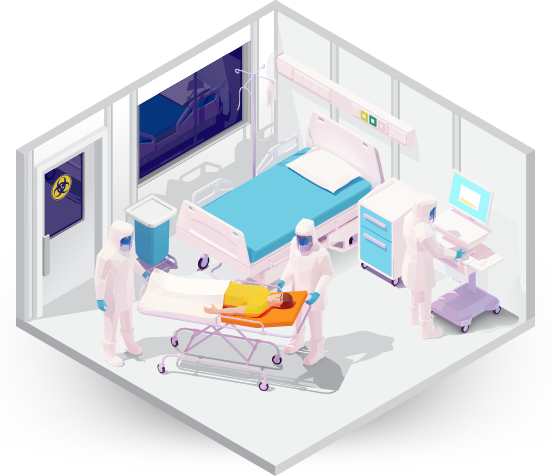

Therefore, positive pressure isolation prevents airborne pathogens from entering the room to avoid the air becoming contaminated. In a positive air pressure isolation room, the air pressure is higher than that in the adjoining areas. Exhaust mechanisms and systems suck contaminated air from the isolation room to a designated area. This system should also allow uncontaminated air to flow into the isolation room when the door is opened as air flows from a high to a low-pressure space. Used when caring for patients with highly infectious diseases, the isolation rooms are very effective. The negative air pressure prevents pathogens from flowing to adjoining, non-contaminated areas when the door to the room is opened. The air pressure in a negative air pressure isolation room is lower than the outside air pressure. Higher air pressures are positive, and lower air pressures are negative. In healthcare settings, isolation rooms have negative pressure, a positive pressure, or a switchable airflow.Įxperts continuously debate the efficacy of positive and negative pressure isolation rooms and how airborne infection isolation room pressures should be managed. Isolation rooms in hospitals can be classified according to the air pressure management system employed to contain the spread of pathogens. Air pressure stabilisers are used to maintain and manage these air pressure parameters.

Poor ventilation and incorrect control of air pressure accelerates and promotes this spread. Medical and engineering experts maintain that the importance of ventilation and controlled airflows in healthcare environments cannot be overstated because pathogens spread rapidly in enclosed spaces. With the emergence of COVID-19, the significance of the need for measures to mitigate the risk has been highlighted because this particular infection is spread via airborne droplets. Healthcare facilities throughout the world recognise and emphasise the fundamental importance of preventing the spread of infections. Such systems are also essential for helping to prevent the spread of harmful microorganisms. You may need to stay in your room, except for tests or procedures that can't be done in your room.In any healthcare setting, efficient ventilation systems ensure the comfort of patients, staff, and visitors.The door to your room may need to stay closed at all times.People who have colds, the flu, or other illnesses won't be allowed. In some cases, only certain family members may be allowed to visit. But all visitors and hospital workers must wear masks, gowns, and gloves. Everyone who enters or leaves the room needs to wash their hands thoroughly.With this type of isolation room, you may be able to feel air blowing out of the room under a closed door. This is done to keep contagious diseases out of the room. Clean, filtered air is constantly pumped into the room. In other cases, such as when a person has a weakened immune system, positive air pressure may be used. In a negative air pressure room, you may be able to feel air being sucked into the room under a closed door or through a slightly opened window. Then it filters the air before moving it outside. This helps prevent airborne diseases (such as tuberculosis or flu) from escaping the room and infecting other people. Sometimes isolation rooms use negative air pressure. How does a hospital isolation room work? Negative air pressure

Or your condition makes you more easily infected by others. You may be isolated because you have an infection (often in the skin, lungs or airways, or intestines) that can be spread to others. If your doctor wants you to be kept away, or isolated, from other patients while you receive medical care, you may be in a special hospital room.


 0 kommentar(er)
0 kommentar(er)
